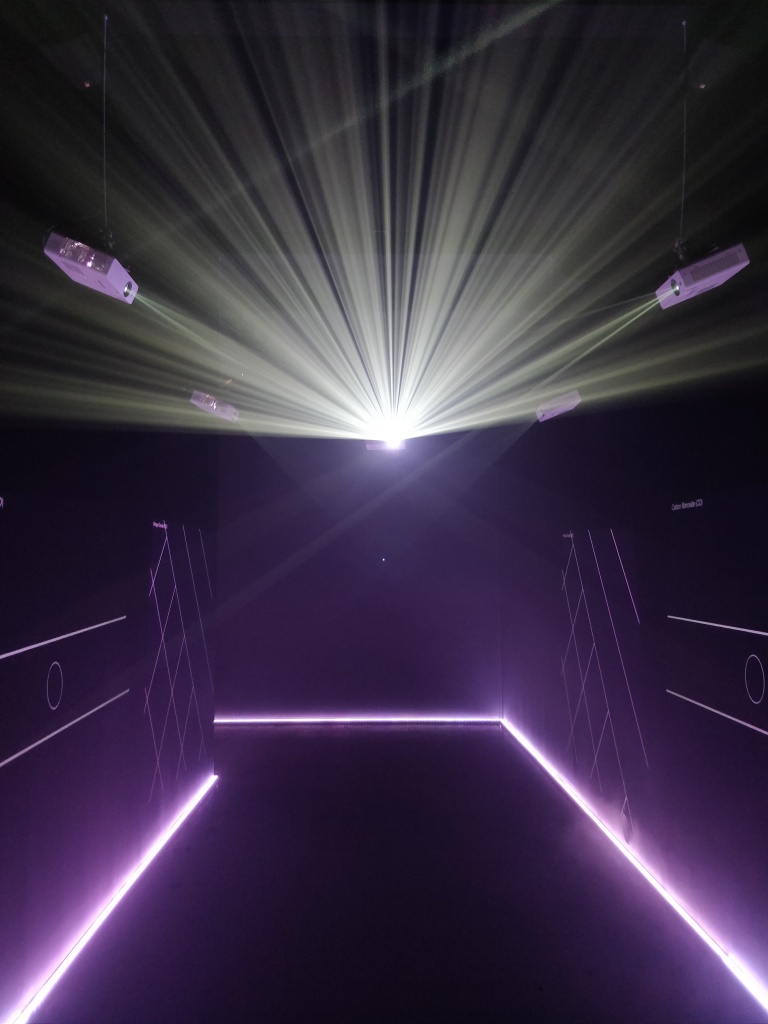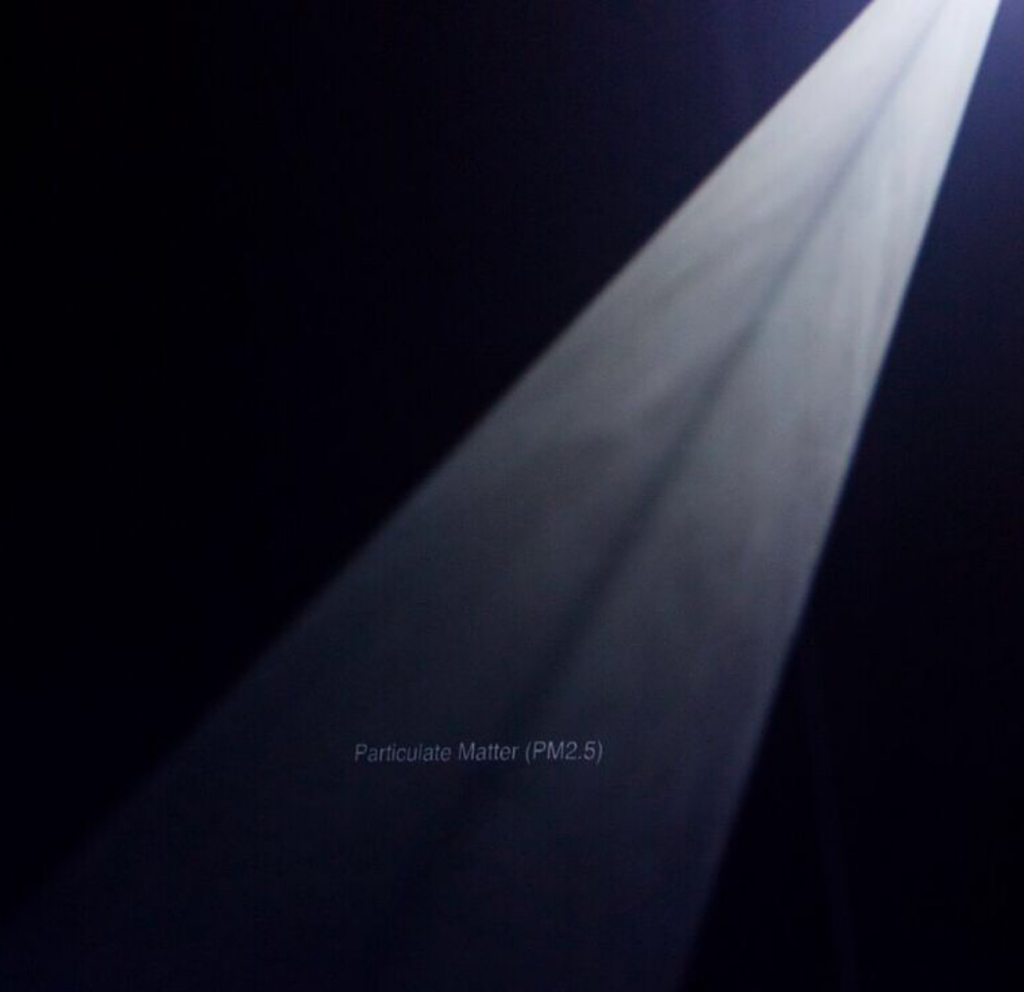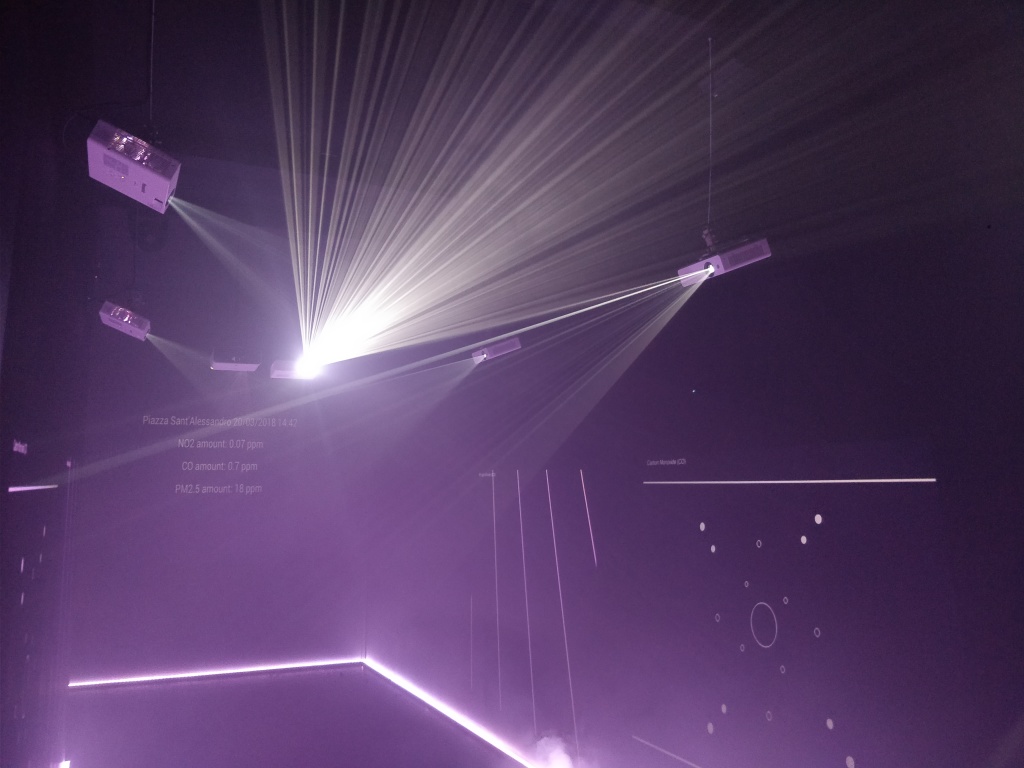Atmospheric Disturbances
Air pollution data is neither ‘fact’ nor all-seeing; no data is. The pollution sensor is positioned at a certain place, and not another; and the reading is taken at a certain time, and not another. At the same time, air pollution itself changes with the rhythm of a city, with weather patterns, and the movements of humans. Data on this topic should therefore be understood as being part of a wider investigation into air pollution, rather than the sole proof of it.
To reflect the situated and partial nature of this data, this installation produced shifting patterns of light in mist, that alter their forms based on the readings in the data. These ‘structures’ in the light expanded and contracted as the pollution measured in the data increased and decreased. The patterns shifted based on the viewers position, coming in and out of focus, preventing any single totalising view of the data, yet producing constantly changing and evolving situated views.
The same data is sonified in time with the procjetions, using voices from Verdi’s 1848 opera La Battaglia de Legnano, based in and first performed in Milan, with the voices rising and falling in volume as the pollution measured in the data increases and decreases. La Battaglia de Legnano was an explicitly political revolutionary opera, dramatising a historic victory of the Lombards over the Holy Roman Empire, at a time when the Italian states were struggling for independence against the Austrian Empire. This makes Verdi’s work a political demonstration, as well as evidence of the political capacities of creative practice. In drawing these aesthetics and their narratives into the examination of the data in Atmospheric Disturbances, this political narrative was intimately entangled with the process of reading the data. This was presented as a parallel to the explicitly political act of examining air pollution in the age of anthropocentric climate change, when no data on this subject should be understood as a neutral presence in the world. Rather than just ‘reveal’ the data, the aestheticisation implicates it in a much wider, and older, political narrative.
This work was produced as part of a collaboration with Superflux for ‘Design In The Age of Experience’, at Superstudio Piu, for Milan Design Week 2018.



